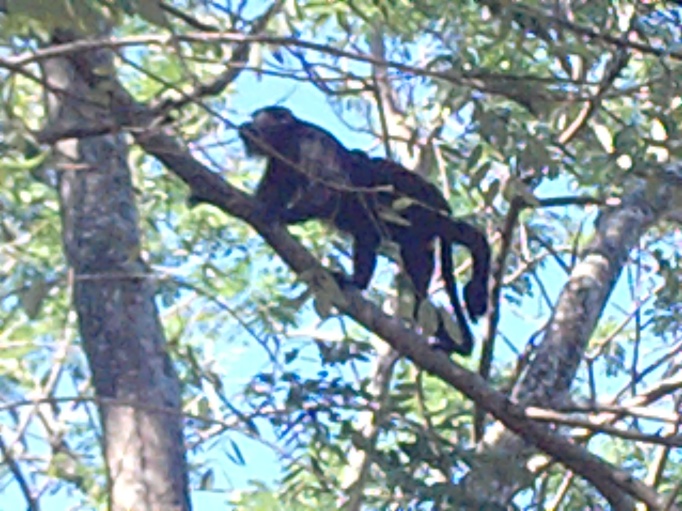Traveling from Panama to Mexico is actually pretty easy, so long as you don’t mind taking a lot of time to get from A to B. Transportation deserves its own blog entry because I’ve probably spent half my trip just traveling. So far I’ve kept track of 41 buses, 25 collectivos and taxis, 5 private cars, 6 boats, 2 horse carriages, 1 horse and 1 scooter that have got me to where I am now in Belize. The roads have been horrendous, and I’m not talking back streets, but main highways and the only roads connecting towns to one another. Sometimes they’re just plain old undriveable due to flooding, rockfall, mudslides, missing bridges or collapsed banks, yet so many huge, coach buses and semi’s traverse them regularly. And I’ve never seen so many semi’s full of rusted metal cargo, anyone know what that’s about? In addition to all that, impossible mountains, curvaceous roads and reckless driving always kind of made me wish I was walking instead. Although, with the exception of rowing into Panama, I always got to walk to my next country since buses drop you off at only the first of 2 border crossings needed every time, one to exit the country you’re in and the other to enter the country you’re going to. Sometimes the two crossings are more than a kilometre apart, and I can’t understand how they really control the area between since locals seemingly wander freely between both. Sometimes I have a hard time even finding where I need to go for my stamps and accidentally end up in the next town without realising I’ve ‘entered’ the country, just strolling along.

one of the cliff-hanger, deadly switch-back roads leading down the mountain into Lago Atitlan, Guatemala
Buses are actually like driving markets since street vendors sell everything on board; no need to go to the market. While on the bus, street vendors take the opportunity to hop on, both while we’re parked and also just come along for a few kilometres before hopping off, and sell all sorts of random things. People carry their entire inventory somehow attached to them in an organised, presentable way. One guy pitched toothbrushes, backscratchers and a foldable fan all in one breath. Some come on dressed as clowns and act out a short comedy sketch for tips. Others come on claiming medical knowledge to sell you creams and herbs that all look like tiger balm to me, and some just want to show you their own health ailments like dumbness, missing limbs or freaky tumors growing out of their stomachs. Those who only sell one thing specialise in yelling it over and over in rapid succession, most popular being ‘PAPASFRITASPAPASFRITASPAPASFRITAS’, and ‘CHICLETSCHICLETSCHICLETSCHICLETS!’ Some don’t bother coming on board and at a stop light just come up to the window, ‘FRESASFRESASFRESAS’ or ‘AGUAAGUAAGUAAGUA’ while sticking said item into your window on the end of a big stick.

our friendliest bus driver, who smiled all the time except when a camera was pointed at him, and insisted we have a photoshoot outside his bus
The buses in central America are beautiful works of carbon-spitting art, to put it simply. Drivers put a lot of pride in the decals, stickers, disco lights, neon and colour patterns both on the inside and outside of their buses, and the most popular long-haul local bus is an early 90’s Blue Bird school buses that probably got shipped here from the US when they couldn’t pass smog check anymore. They have the capacity of about 55 children, but maybe 60 adults squish the popular routes. They’re affectionately called chicken buses, and some upper class locals even refuse to take them, but in my experience they’re a lot more entertaining, but a lot cheaper for a much longer (just in time, not distance) journey, and I always appreciate more bang for my buck. Just be prepared that the journey will take at least an hour longer than the driver tells you, and will include numerous stop and go pickups of people on the side of the highway that don’t count as “stops,” so all buses are “direct.” Not quite true, but I’m not in a rush so I’ll just keep enjoying the scenic route.


















